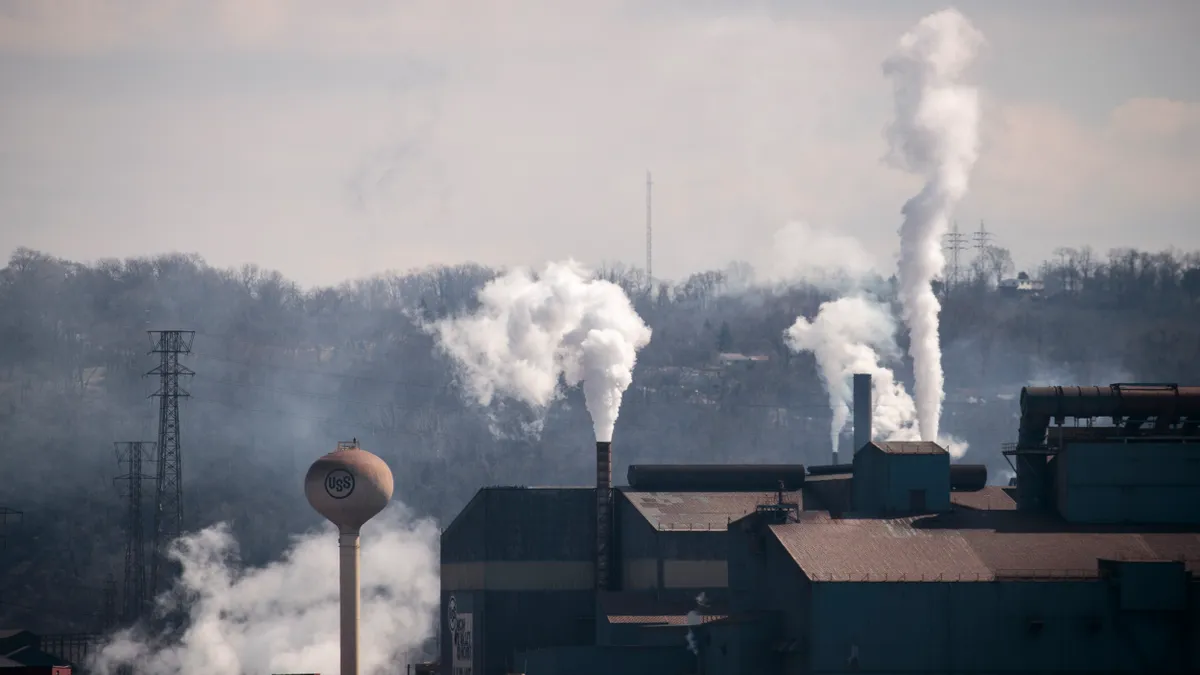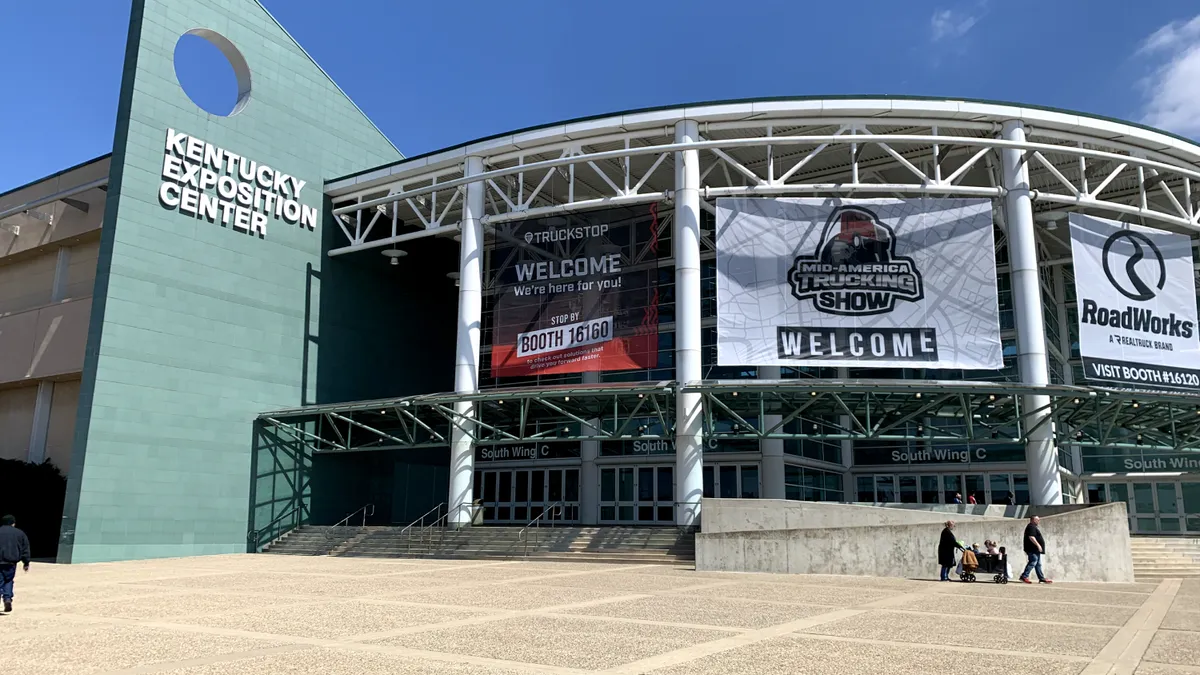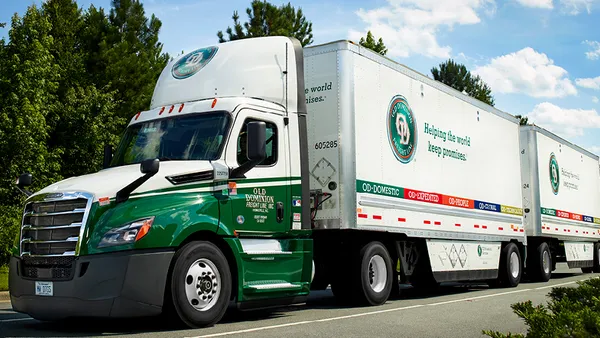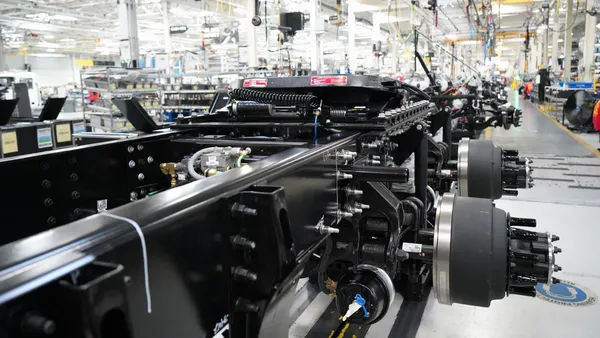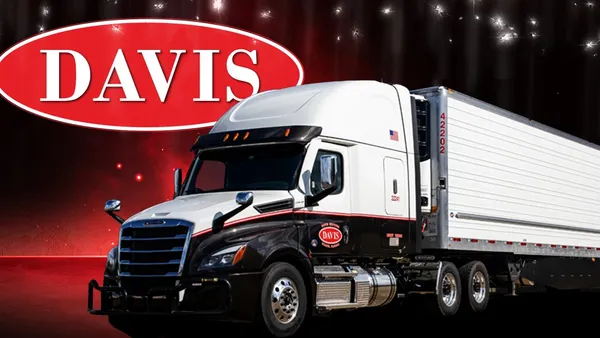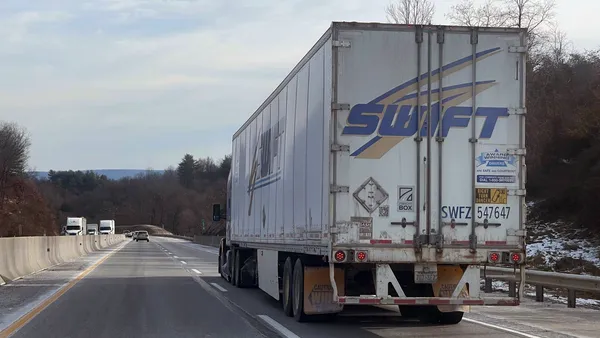While the Rust Belt isn't likely ever returning to its former glory, steel production is experiencing an uptick this year.
As of Oct. 30, year-to-date domestic production of raw steel was up 20.3% compared to the same period last year, according to the American Iron and Steel Institute.
Increased domestic steel production brings increased need for steel transport. That benefits trucking firms such as Timber Products. The company is based in Oregon, but its crucial lanes are in steel-producing areas between the Midwest and Southeast, said Tom Gennarelli, vice president of trucking and transportation.
But with labor constraints and equipment shortages, alongside growth in steel production, steel haulers face challenges.
"The elephant in the room is that handling volume is hard right now," said Avery Vise, vice president of trucking at FTR. "In 2022, demand for metals for machinery and construction will continue to grow, while other segments will likely remain flat."
Still, Vise predicted next year, overall flatbed capacity "will be able to handle whatever comes its way."
Working through the dip in chips
A number of factors have converged to push up steel production in the U.S. The demand for steel from a strong construction market is one. This impacts not just materials, but the machinery needed for construction projects, as well.
A backlog of overseas steel imports is another problem.
"The time it takes for foreign steel to reach the U.S. market is causing a host of issues," said Gennarelli.
He noted the backlog of ships anchoring at ports, which has the Biden administration working on measures to decrease congestion. But Gennarelli said the company hasn't experienced significant congestion in its lanes.
"We've been able to keep our trucks moving," he said. "They do a good job of running through the night, and we've had no bottlenecks loading or unloading."
The bigger issue for Gennarelli is the equipment shortage.
"The elephant in the room is that handling volume is hard right now."

Avery Vise
Vice President of Trucking at FTR
As Timber Products looks ahead to 2022, it plans to add to its flatbed and heavy-haul truck lineup. But Gennarelli said the company is bringing on 50 trucks to move steel and other commodities — down from the company's original goal of adding 80 trucks.
"Everything is allocated for next year," said Gennarelli. "The semiconductor shortage impacts truck production just like car production."
To get around the issue, Timber Products is keeping 10 trucks in its lineup that the company had planned to retire.
"We will run them longer until the shortage is over," Gennarelli said.
In addition, rather than partnering with one, long-standing truck maker, the firm is purchasing trucks from a variety of OEMs to ensure it gets the trucks it needs to keep up with demand.
A strong outlook for flatbed
One factor that makes the flatbed segment different from others is a smaller carrier profile.
"There are two or three carriers out there with more than 1,000 flatbeds," Vise said. "They operate more in a spot market as routine, compared to dry van or refrigerated."
Early in 2021, when the flatbed market lagged behind other segments, drivers gravitated to dry and refrigerated. But said Vise: "There has been a sharp recovery in flatbed driver pay, and capacity is catching up, too."
Flatbed demand stays strong
When Vise looks at forecasts for different truck segments in 2022, flatbed shows the strongest rate of increased demand across segments, something truck makers realize.
"Other segments will be flat, but demand for flatbed will be robust," he said. "We expect some improvement in the semiconductor shortage, which makes us optimistic about flatbed production as a consequence."
While the current ramping up of steel production has led to some challenges, the coming year offers reason for hope that fleets can keep up in 2022.
"The overall strength of the trucking market looks good," said Vise. "And flatbed will be the strongest of the segments."


